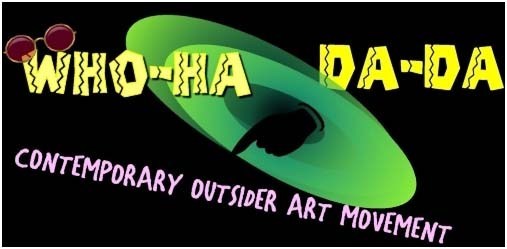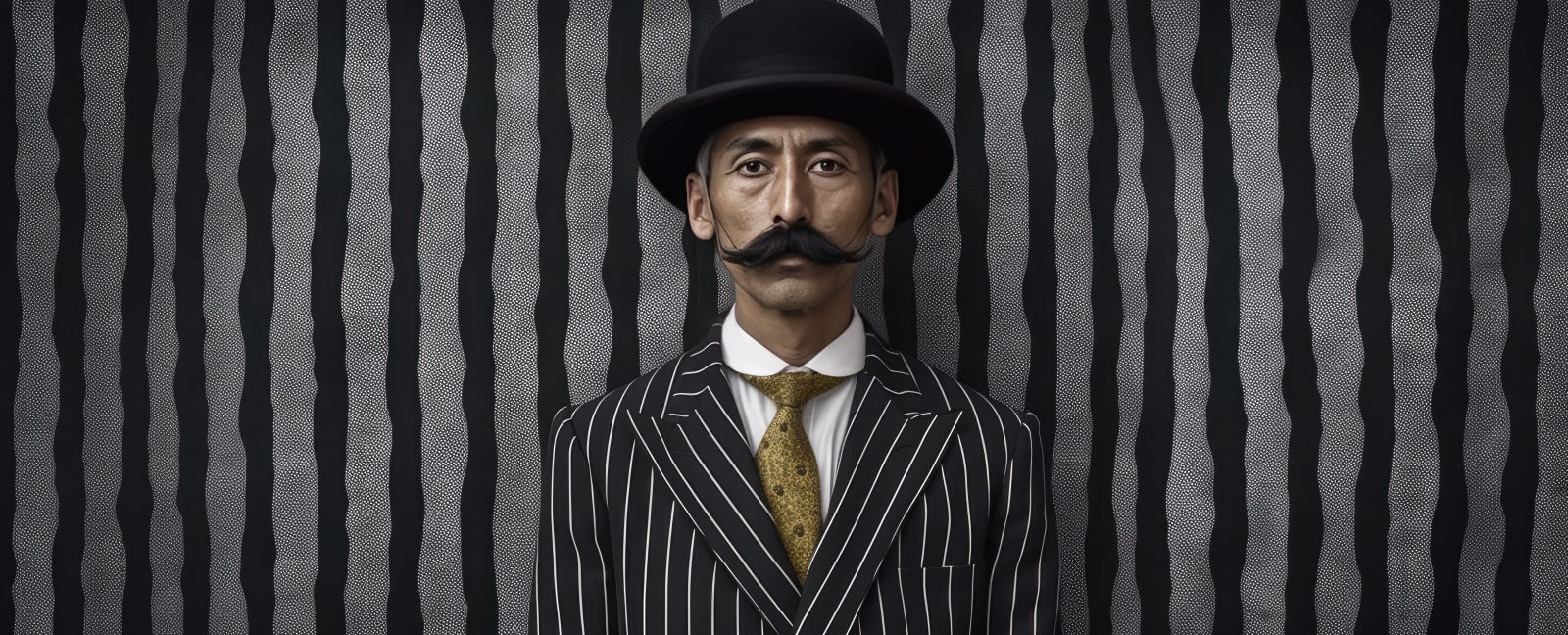Dadaism in Modern Society: The Rebellion Continues
The Psychology Behind Artistic Rebellion
Dadaism In Modern Society – Sigmund Freud once observed that humans use humor to express truths we otherwise cannot confront directly. This psychological insight illuminates the essence of Dadaism, perhaps the most misunderstood yet influential art movement of the 20th century. Rather than brutally confronting ideals head-on, we create satire or mockery to reveal injustice and diminish overarching power. This mechanism lies at the heart of Dada’s approach to cultural critique.
Beyond Pranks: Dada’s Serious Purpose
When Marcel Duchamp submitted a urinal to an art exhibition in 1917, signing it “R. Mutt” and calling it “Fountain,” he wasn’t merely pulling a prank—he was staging a revolution. Though Dadaists often appeared to be an organized group of provocateurs hurling nonsense at the establishment, their work carried profound meaning beneath its surface absurdity.
Born From Chaos: Dada’s Origins and Evolution
Born from the disillusionment of World War I, Dada emerged as a radical response to global conflict. The movement arose from a combination of key avant-garde ideas and quickly became a compelling, cutting-edge force in post-war Europe and America. These artists asked: If rational thought and conventional values led to the trenches of Europe, why not embrace the irrational?
The Anti-Art Paradox
Unlike other artistic movements with defined aesthetic principles, Dadaism deliberately positioned itself as “anti-art,” rejecting traditional boundaries. This absence of a set genre allowed Dada to be expressed through wildly individualistic approaches—from Tristan Tzara’s chance-generated poetry to Hannah Höch’s politically charged photomontages with strong anti-colonialist ideals.
Transforming What We Call “Art”
What makes Dada especially remarkable is its central paradox: a movement dedicated to demolishing artistic conventions ended up transforming them forever. By challenging the very definition of what constitutes art, Dadaists didn’t destroy creativity—they expanded its possibilities beyond imagination. This wasn’t simply an expression of foolery and pranks but a force that paradoxically changed how art is defined, made, and consumed.
Dada’s Living Legacy
When we encounter memes that satirize political figures, witness performance art that disrupts public spaces, or see everyday objects elevated to artistic status, we’re experiencing Dada’s continuing influence. The revolutionary spirit that animated those early 20th century rebels hasn’t disappeared—it has evolved, finding new expressions in our digital age while maintaining its essential character as a movement that questions everything, especially authority.
The Revolutionary Impact of Dada: Disrupting Art History
Challenging the Museum Narrative
Subversive, comprehensive, and uneven, Dada never fit conveniently into the well-worn account of the evolution of modern art that major museums have championed. While institutions like MoMA now celebrate Dada as a “catalyst for creativity,” the movement initially resisted such neat categorization. This resistance to classification wasn’t accidental—it was essential to Dada’s identity as a force that questioned the very foundations of artistic tradition and institutional authority.
Beyond Its Brief Lifespan: Dada’s Enduring Significance
Despite burning bright and brief—lasting barely a decade—the Dada movement left a devastating impression on the art world, creating shock waves that continue to ripple through contemporary artistic practice. Art historians have often underestimated Dada’s importance, perhaps because its deliberate chaos challenges the orderly narratives they prefer to construct. Yet this “anti-movement” fundamentally altered how we understand art’s purpose and possibilities.
Born from Crisis: The Origins of Artistic Rebellion
Dada emerged as a passionate reaction to a world gone mad. In the midst of the brutality of World War I, an international collection of draft-evading painters, poets, performers, and provocateurs sought refuge in neutral Switzerland. From the Cabaret Voltaire in Zurich, figures like Hugo Ball, Tristan Tzara, and Emmy Hennings began experimenting with new forms of artistic expression that matched the chaos of their times.
Patriotism as the Enemy of Art
These artists identified nationalism as the root evil tearing Europe apart. They believed that a global fellowship of creators standing against destructive patriotism could forge a path to a better future. This international perspective remains strikingly relevant today, as artists continue to work across borders to address global crises from climate change to political extremism.
Radical Methods for Radical Times
Noble as their objective might have been, Dada artists embraced a radical, deliberately provocative approach to achieving it. They agreed that art shouldn’t concern itself with conventional beauty and aestheticism, but rather should heighten human awareness of reality by any means necessary. Marcel Duchamp’s readymades, Hannah Höch’s photomontages, and Kurt Schwitters’ assemblages all served to jolt viewers out of complacency.
Responding to Modernity’s Overwhelming Pace
The Dadaists recognized that society had been blindsided by the rapid succession of technological and social changes that arrived with the late 19th and early 20th centuries. They understood that the dizzying rate of change prevented society from adapting smoothly. This insight feels remarkably prescient in our digital era, where technological acceleration continues to outpace our ability to process its implications.
Against Mass Production and Conformity
With the rise of industrialization and mass production came a collective mindset that troubled the Dadaists. They shared the conviction that society was sacrificing individuality to progress in a uniform, mechanized manner dictated by bourgeois values. Their celebration of chance, nonsense, and individual expression directly challenged this homogenization—a challenge that resonates powerfully with contemporary concerns about algorithm-driven conformity and digital groupthink.
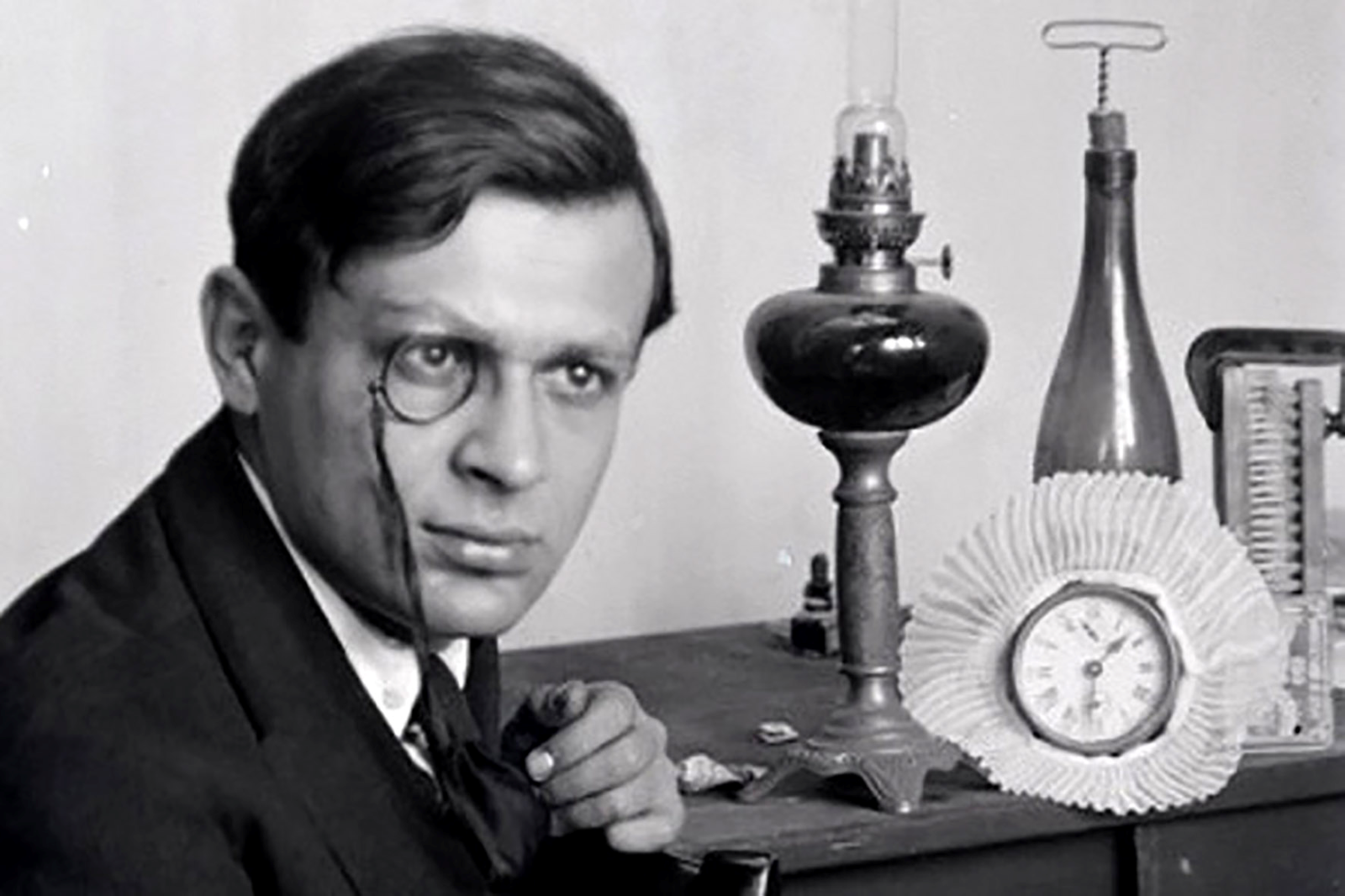
The Paradox at Dada’s Core: Playful Revolution
The Name That Means Everything and Nothing
Dada’s delightfully absurd name—French infant talk for “hobby horse” and coincidentally Romanian for “yes, yes”—wasn’t chosen for its meaning but precisely for its lack of one. The Dadaists selected it randomly from a dictionary, embodying their commitment to chance and their rejection of rational systems. This seemingly insignificant detail reveals a profound truth about the movement: even its name was an act of artistic rebellion.
Defining the Indefinable
The movement’s most illuminating self-definition came from Romanian poet Tristan Tzara, one of Dada’s central figures: “Dada questions everything/Dada is an armadillo/Everything is Dada, as well/Beware of Dada.” This energetically conflicting blend of nonsense and logic captures the essence of the Dada spirit. The statement simultaneously invites participation and warns against it, claims universality while suggesting specificity, and undermines itself even as it declares its power.
Embracing Contradiction
Dada, at its core, is a paradox. The movement that claimed to be against art created some of the 20th century’s most influential artworks. The “anti-movement” that rejected manifestos produced numerous manifestos. The collective that celebrated individualism developed recognizable styles and approaches. These contradictions weren’t failures of consistency—they were deliberate strategies that forced audiences to question their assumptions about what art could and should be.
Performance as Provocation
While many art movements focused on philosophy and aesthetics, Dada emphasized action and performance. It wasn’t about theorizing—it was about disrupting reality through artistic intervention. Cabaret performances at the Zurich Cabaret Voltaire featured sound poetry, nonsensical recitations, and provocative theatrical elements that broke down barriers between art forms and between artists and audiences.
Living Dada: Contemporary Acts of Artistic Rebellion
In January 2006, a 77-year-old French performance artist named Pierre Pinoncelli thrust Dadaism back into public consciousness through a provocative act at the Pompidou Center in Paris. Wielding a hammer, Pinoncelli attacked a replica of the work that Marcel Duchamp originally created in 1917—the infamous urinal that Duchamp had flipped upside down, signed “R. Mutt” (after the popular Mutt and Jeff comic strip), and titled “Fountain.”
The Fountain That Keeps Flowing
Describing his action as “a wink to Dadaism,” Pinoncelli chipped the artwork, which was subsequently repaired. The museum now displays a replica to protect the original piece. This incident reveals how Duchamp’s “Fountain”—selected by art critics as the most influential artwork of the 20th century—continues to provoke and inspire a century after its creation. The original piece, rejected by the Society of Independent Artists despite their “no jury” policy, demonstrated the art world’s hypocrisy about what constituted legitimate artistic expression.
From Vandalism to Performance Art
What makes Pinoncelli’s act particularly interesting from a Dadaist perspective is its ambiguous status between vandalism and performance art. Was he destroying art or creating it? By attacking Duchamp’s readymade—itself a challenge to artistic conventions—Pinoncelli was participating in a dialogue across time, demonstrating that Dada’s provocative spirit remains alive in contemporary art practices. His action forces us to question the sanctity of art objects, the nature of artistic creation, and the boundaries between destruction and creation.
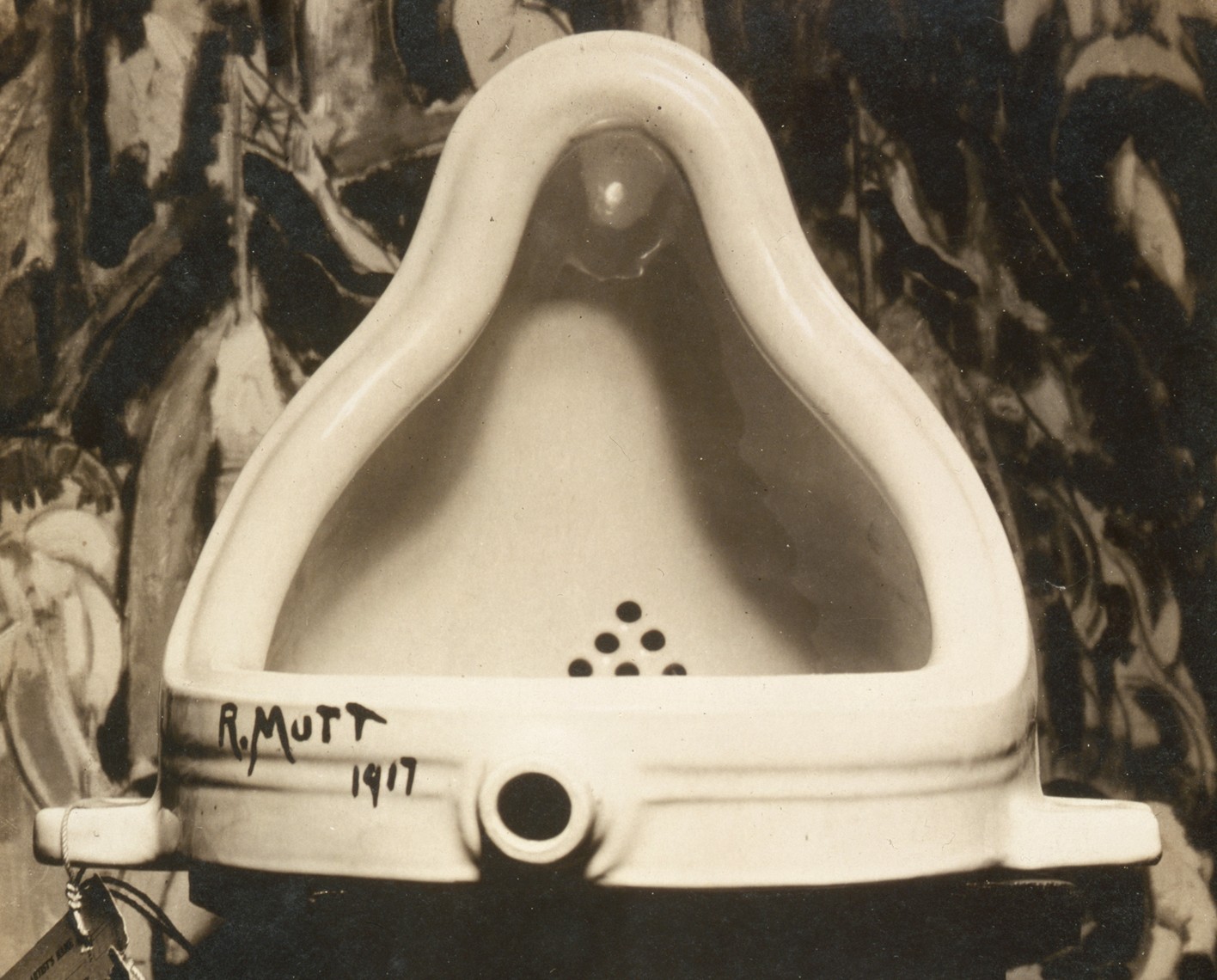
Radical Ideas in Porcelain: How Duchamp Changed Everything
The Ordinary Object as Revolutionary Art
With his work “Fountain,” Marcel Duchamp unleashed several revolutionary ideas that continue to shape contemporary art practices. By declaring an object of the lowliest function—a mass-produced urinal—to be sculpture, he proposed a radical notion: anything can be art if an artist designates it as such. This simple act fundamentally altered the relationship between creator, object, and audience, challenging the very foundations of artistic practice.
The Death of Technical Skill
Since a readymade—Duchamp’s term for his found object pieces—is not actually crafted by the artist, technical skill suddenly became irrelevant. In one provocative gesture, Duchamp dismantled centuries of artistic tradition that had valued virtuosity and craftsmanship above all else. This conceptual shift moved art from the realm of the hand to the realm of the mind, suggesting that ideas could be more important than execution—a concept that would later become the cornerstone of conceptual art in the 1960s.
Signatures and Authenticity in Question
The artist’s signature, once the sacred marker of authenticity and value, was similarly undermined. If it no longer verified craftsmanship or uniqueness, why not use the name of a comic strip character? Duchamp’s choice of “R. Mutt” as his pseudonym wasn’t just playful—it was a direct attack on the cult of artistic genius that had dominated Western art since the Renaissance. In today’s world of anonymous street artists, collective authorship, and algorithmic creation, this questioning of authorship feels remarkably prescient.
The Value Paradox
Since Duchamp’s urinal was indistinguishable from countless others on countless bathroom walls, it should logically have been worthless as an art object. Yet the damaged Duchamp piece was valued at $3.6 million—a contradiction that perfectly embodies Dada’s love of paradox. This extraordinary valuation of ordinary objects forces us to confront uncomfortable questions about how we assign cultural and monetary value in art markets. As Duchamp might have sardonically observed, in the art world, it’s apparently the thought that counts.
From Dada to Surrealism: Evolution of Ideas
By the mid-1920s, Dada as a formal movement had diminished, yet several of its central ideas—particularly the embrace of incoherence and the power of the unconscious—were adopted and developed further by the Surrealists. André Breton, initially a Dadaist himself, channeled Dada’s anarchic energy into a more structured exploration of dreams, desire, and psychological states, creating a movement that would dominate much of 20th century art.
A Pervasive, Often Invisible Influence
Dada’s legacy is so pervasive in contemporary culture that it’s frequently overlooked, dismissed by being taken for granted. We see its influence everywhere—in advertising that embraces absurdity, in internet memes that juxtapose unrelated images for comic effect, in performance art that disrupts public spaces, and in conceptual works that prioritize ideas over aesthetics. When artists use found objects, incorporate chance, challenge institutional values, or blur the line between art and life, they’re drawing from Dada’s revolutionary toolkit.
The Enduring Power to Provoke
Perhaps most remarkably, these 100-year-old artworks still possess the ability to titillate, disgust, and embarrass us. In an age when shock value seems increasingly difficult to achieve, Dadaist works maintain their edge—not because they’re deliberately offensive, but because they continue to challenge our fundamental assumptions about what art is and what it should do. This persistent capacity to provoke thought and emotion is by no means a small achievement—it’s the hallmark of art that transcends its historical moment to speak to universal aspects of human experience.
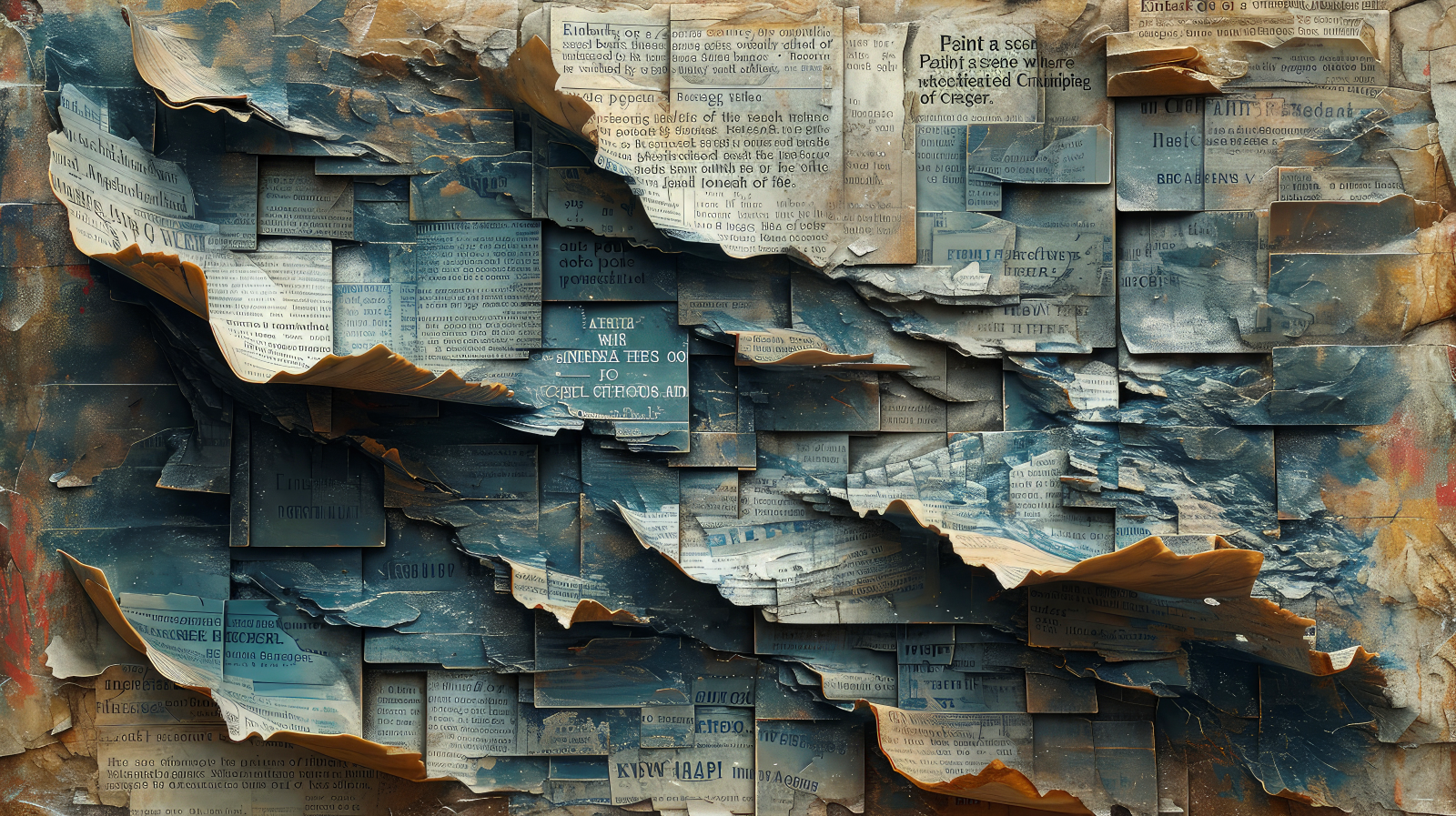
Four Cities, One Revolution: How Dada Spread Across Continents
Zurich: The Neutral Ground Where Chaos Was Born
In the midst of World War I’s devastation, neutral Switzerland became the unlikely birthplace of art’s most disruptive movement. At the Cabaret Voltaire, a cramped nightclub on Spiegelgasse in Zurich, German poet Hugo Ball and cabaret performer Emmy Hennings gathered a group of exiles fleeing the war. Beginning in February 1916, their nightly performances shattered artistic conventions with nonsensical poetry, bizarre costumes, and provocative displays.
Zurich Dada was characterized by its theatrical performances and sound poetry. Hugo Ball would appear on stage in cardboard costumes reciting nonsense verses like his famous “Karawane,” which began “jolifanto bambla o falli bambla.” Romanian poet Tristan Tzara, who would later bring Dada to Paris, became the movement’s energetic promoter and manifesto writer. The Swiss artist Sophie Taeuber-Arp brought a distinctive geometric abstraction to Dada through her multidisciplinary work in textiles, beadwork, and dance.
What made Zurich Dada unique was its international character—artists from Germany, Romania, France, and Switzerland collaborating in multiple languages, creating a true artistic Tower of Babel that reflected their rejection of the nationalism driving the war.
Berlin: Dada Gets Political
When Richard Huelsenbeck brought Dada from Zurich to Berlin in 1917, it transformed in response to Germany’s postwar chaos. Berlin Dada became explicitly political, engaging directly with the turmoil of the Weimar Republic through biting satire and revolutionary messaging.
Hannah Höch pioneered photomontage as a technique perfectly suited to criticizing mass media, gender roles, and political power. Her groundbreaking work “Cut with the Kitchen Knife through the Last Weimar Beer-Belly Cultural Epoch in Germany” (1919) combined newspaper clippings, magazine photos, and text in a fragmented vision of German society. Similarly, John Heartfield’s photomontages delivered scathing critiques of rising fascism, while Raoul Hausmann’s assemblages mocked bourgeois values.
Unlike the more playful manifestations elsewhere, Berlin Dada embraced its role as “a political revolutionary movement,” directly challenging the systems that had led to war and economic collapse. This political edge continues to inspire activist artists responding to contemporary crises.
New York: The Art of Disruption Goes Transatlantic
Across the Atlantic, Marcel Duchamp, Francis Picabia, and Man Ray developed their own distinct version of Dada, beginning even before the European movement was formally named. New York Dada had a cooler, more ironic tone, with an emphasis on readymades, mechanical imagery, and conceptual provocations.
Duchamp arrived in New York in 1915, bringing with him a spirit of artistic rebellion that found fertile ground in America’s more open artistic environment. His readymades—including the infamous “Fountain” (1917) and “Bicycle Wheel” (1913)—fundamentally challenged what could be considered art. Man Ray’s experimental photography and early films expanded Dada’s visual language, while Francis Picabia’s mechanical drawings portrayed humans as soulless machines—a theme that feels remarkably relevant in today’s discussions about AI and automation.
American collector Katherine Dreier and photographer Alfred Stieglitz were crucial supporters, with Stieglitz’s photograph of “Fountain” preserving Duchamp’s rejected urinal for posterity after the original was mysteriously lost.
Paris: From Dada to Surrealism
When Tristan Tzara arrived in Paris in 1920, Dada erupted in the cultural capital of Europe with performances designed to shock the French bourgeoisie. The Paris Dada group included poets André Breton, Louis Aragon, and Philippe Soupault, who organized events like the infamous mock trial of writer Maurice Barrès for “crimes against the security of the mind.”
However, Paris Dada was relatively short-lived as tensions grew between Tzara and Breton. By 1924, Breton published the first Surrealist Manifesto, channeling Dada’s interest in chance and the unconscious into a new movement with more structured theoretical foundations. This evolution from Dada to Surrealism demonstrates how artistic revolutions often lead to new forms, with each generation building on and reacting to what came before.
The geographical spread of Dada across these four major centers reveals how the movement adapted to different cultural and political environments while maintaining its core principles of challenging conventions, embracing chance, and disrupting expectations. This international character makes Dada particularly relevant in today’s globalized, digitally connected world.
Digital Dadaism: The Spirit of Dada in the Internet Age
The Perfect Medium for Absurdity
If the Dadaists were working today, they’d likely be creating viral TikTok performances, glitching digital images, and launching absurdist Twitter accounts. The internet, with its emphasis on remixing, sharing, and disrupting conventional communication, functions as the ideal medium for Dadaist expression. As communication scholar Marshall McLuhan might have observed, in many ways, the medium of the internet itself is inherently Dadaist.
The spirit of Dada permeates digital culture so thoroughly that many creators participate in Dadaist practices without necessarily recognizing their historical lineage. From deliberately glitched images to the abstract humor of Gen Z memes, Dada’s DNA is woven into the fabric of online expression.
Meme Culture: Duchamp Would Approve
Internet memes—those rapidly evolving, often absurdist combinations of text and image that spread virally across platforms—function remarkably like Dadaist collages. When users overlay text on unrelated images, juxtapose disparate visual elements, or deliberately distort media to create new meanings, they’re employing techniques pioneered by Hannah Höch and Raoul Hausmann a century ago.
Consider the surreal “Deep Fried Memes” phenomenon, where images are deliberately degraded through multiple compressions, color distortions, and overlays until they become nearly unrecognizable. This deliberate degradation of visual information parallels Dada’s rejection of aesthetic beauty in favor of disruption and defamiliarization.
The speed at which memes evolve—often becoming increasingly abstract and self-referential over time—mirrors Dada’s interest in randomness and its rejection of fixed meaning. When a meme format loses its impact through overuse, the internet community instinctively moves toward more unusual combinations—a digital version of Dada’s continuous innovation to avoid artistic stagnation.
Remix Culture and Digital Appropriation
Dada pioneered techniques of appropriation and remixing long before these terms entered our lexicon. When contemporary digital artists sample existing content, remix found footage, or create mashups across media, they’re following directly in the footsteps of Duchamp’s readymades and Schwitters’ Merz constructions.
Digital platforms like YouTube, SoundCloud, and TikTok are filled with creations that recontextualize existing content to create new meanings—from music mashups that combine incompatible genres to found footage films that transform Hollywood blockbusters into experimental art. The ubiquitous “Hitler Reacts” meme, which recontextualizes a scene from the film “Downfall” with new subtitles addressing contemporary issues, exemplifies how digital appropriation can transform serious content into absurdist commentary, much as Dada transformed everyday objects into art through recontextualization.
Social Media as Performance Space
The Cabaret Voltaire has been replaced by Instagram Live and TikTok. Today’s digital performers can reach audiences of millions with their provocations, creating the kind of immediate, disruptive experiences that Dadaists sought.
Performance artists like Molly Soda and Amalia Ulman have used social media platforms as spaces for extended performances that blur the line between fiction and reality—a distinctly Dadaist approach. Ulman’s “Excellences & Perfections” (2014), in which she fabricated an Instagram personality going through plastic surgery and lifestyle changes, questioned the authenticity of online self-presentation much as Duchamp questioned the authenticity of artistic creation.
Similarly, the rise of “post-ironic” content creators who maintain character across platforms without breaking the fourth wall challenges audiences to determine what is genuine and what is performance—a confusion of categories that Dadaists would have appreciated.
AI-Generated Art: The Ultimate Chance Operation
Perhaps the most Dadaist development in contemporary digital culture is the rise of AI-generated art. When Tristan Tzara advocated creating poetry by pulling random words from a hat, he was proposing a proto-algorithmic approach to creativity that today’s machine learning systems have realized at scale.
AI art tools like DALL-E, Midjourney, and Stable Diffusion create images based on text prompts, often producing surreal combinations and unexpected juxtapositions that would make Max Ernst envious. The “latent space” these AI systems navigate—the mathematical realm between defined categories where new forms emerge—functions as a technological version of the Dadaist unconscious, producing dreamlike combinations that human artists might never conceive.
Some contemporary artists deliberately use “nonsense” prompts to generate AI art, embracing chance and randomness in ways that directly parallel Dadaist techniques. The tension between human intention and algorithmic randomness in these collaborations creates a distinctly modern form of Dada expression.
Today’s Dadaists: Contemporary Artists Carrying the Torch
Provocateurs in the Duchamp Tradition
Several contemporary artists directly channel Dada’s provocative spirit, using similar strategies of disruption, appropriation, and institutional critique. Maurizio Cattelan achieved notoriety with works like “Comedian” (2019)—a banana duct-taped to a wall that sold for $120,000 before being eaten by another artist. This piece echoes Duchamp’s readymades by questioning value systems in art while generating public controversy.
Similarly, Banksy’s self-shredding painting “Love is in the Bin” (2018), which partially destroyed itself immediately after being sold at auction, demonstrates Dada’s legacy of artistic pranks that challenge art market conventions. His anonymous identity and guerrilla approach to art placement also reflect Dada’s rejection of artistic celebrity and traditional exhibition spaces.
Collective Action and Institutional Critique
The Yes Men, an activist collective that has been creating interventions since the 1990s, embody Dada’s political edge through their “identity correction” performances. By impersonating corporate representatives and government officials at public events, they create moments of disruption that expose institutional hypocrisy—a strategy that connects directly to Berlin Dada’s political activism.
Chinese artist Ai Weiwei combines readymades, institutional critique, and political commentary in works like “Sunflower Seeds” (2010)—an installation of 100 million handcrafted porcelain seeds at the Tate Modern. His deliberate destruction of an ancient Han Dynasty urn and series of middle-finger photographs directed at centers of power demonstrate Dada’s confrontational approach updated for contemporary political contexts.
Digital Natives and New Media Dadaists
Younger artists are bringing Dadaist approaches to digital platforms. Ryan Trecartin’s frenetic videos featuring costumed performers speaking in fragmented, absurdist dialogue create the kind of disorienting experience that early Dada performances aimed for. His collaborations with Lizzie Fitch produce immersive environments that update the Cabaret Voltaire for the internet age.
Net artist Cornelia Sollfrank’s “Female Extension” (1997) flooded an online art competition with submissions from fictional female artists, exposing gender bias while employing Dadaist tactics of identity play and institutional disruption. More recently, Constant Dullaart has created armies of fake social media accounts performing synchronized actions, questioning authenticity in digital space much as Duchamp questioned authenticity in art.
These contemporary practitioners, though working in vastly different contexts from the original Dadaists, continue their legacy of challenging conventions, disrupting expectations, and questioning the boundaries between art and life.
The Women of Dada: Overlooked Pioneers
Emmy Hennings: The Forgotten Co-Founder
Despite being essential to Dada’s birth, Emmy Hennings has often been relegated to a footnote in art history. As co-founder of the Cabaret Voltaire with her husband Hugo Ball, this German poet, performer, and puppeteer was the cabaret’s principal performer and manager. Her provocative stage presence and experimental poetry were central to early Dada performances, yet she’s frequently overshadowed by male colleagues in historical accounts.
Hennings’ written work explored themes of imprisonment, addiction, and gender roles—experiences informed by her time in prison and struggles as a working woman. Her contribution to Dada demonstrates how the movement provided space for critiquing not just political systems but also social constraints on women’s expression.
Hannah Höch: Cutting Through Gender Politics
Berlin Dadaist Hannah Höch wasn’t just a pioneer of photomontage—she was one of the first artists to directly address gender politics through this medium. Works like “Cut with the Kitchen Knife” (1919-20) and her series “From an Ethnographic Museum” combined images of traditional women’s activities with machinery and tribal artifacts, challenging both Western gender norms and colonial perspectives.
As the only woman in the Berlin Dada Club, Höch faced marginalization even within the supposedly revolutionary movement. Her relationship with Raoul Hausmann reflected the contradiction between Dada’s radical politics and its often conventional gender attitudes. Despite these challenges, Höch created some of Dada’s most enduring and complex works, maintaining her artistic practice through the Nazi period in internal exile.
Sophie Taeuber-Arp: Bridging Art and Design
Swiss artist Sophie Taeuber-Arp defied categorization by working across disciplines including textile design, interior design, architecture, painting, sculpture, and dance. Her geometric abstractions, dada heads, and marionettes challenged the hierarchy between fine art and applied arts—a division often gendered in the art world.
While male Dadaists like Hans Arp (whom she married) gained more recognition, Taeuber-Arp’s systematic approach to abstraction influenced the development of Constructivism and Concrete Art. Her appearance on the Swiss 50-franc note represents a belated recognition of her importance to art history.
Baroness Elsa von Freytag-Loringhoven: The Proto-Performance Artist
Perhaps the most radical woman associated with Dada was Baroness Elsa von Freytag-Loringhoven, whose street performances and assembled sculptures embodied Dada’s spirit of disruption. The German-born artist lived in New York during the 1910s-20s, creating poetry, sculptures from found objects, and performances that involved elaborate costumes assembled from trash and stolen items.
Recent scholarship suggests the Baroness may have actually conceived “Fountain,” with Duchamp possibly submitting it on her behalf. Whether or not this theory proves true, her work with readymades and performance predated many of Dada’s now-canonical works. Her poem “A Dozen Cocktails—Please” was composed with words pulled randomly from a bag—a technique that anticipated Tristan Tzara’s famous instructions for making a Dadaist poem.
These women’s contributions to Dada weren’t peripheral but essential to the movement’s development. Their relative absence from many historical accounts reveals not just gender bias in art history but a missed opportunity to understand Dada’s full range of revolutionary approaches to art and society.
Dada’s Political Edge: Revolutionary Art in Contemporary Times
From Anti-War to Climate Crisis
Dada emerged as a response to the catastrophe of World War I, with artists using absurdity to challenge the political systems that had led to unprecedented bloodshed. Today, artists confronting the climate crisis employ similar tactics. The Extinction Rebellion movement combines performance, disruption, and striking visual elements in protests that echo Dada’s revolutionary spirit. Their die-ins, red-robed processions, and symbolic actions use theatrical elements to communicate urgency in ways that conventional discourse cannot—precisely what Dadaists aimed for with their provocative performances.
Artist Agnes Denes’s “Wheatfield – A Confrontation” (1982), which transformed a Manhattan landfill into a two-acre wheat field, and contemporary eco-art that repurposes waste materials share Dada’s approach of transforming the mundane into the meaningful. These works don’t just comment on environmental issues—they challenge the fundamental systems that prioritize profit over planetary health, much as Dada challenged the nationalism that prioritized territory over human life.
Countering Authoritarianism and Propaganda
In our era of information warfare and rising authoritarianism, Dada’s techniques for destabilizing official narratives have renewed relevance. The Russian art collective Pussy Riot’s guerrilla performances in unauthorized locations directly challenge state power, resulting in harsh legal consequences much as Berlin Dadaists faced political repression. Their brightly colored balaclavas serve as both disguise and visual signature, creating a recognizable brand of resistance that combines anonymous collective action with high-profile provocation.
During the Arab Spring and subsequent political movements, activists used meme-like images, street art, and performative protests to undermine state propaganda and mobilize public opinion. These techniques—rapid reproduction, visual disruption, and the use of absurdity to reveal truth—connect directly to strategies pioneered by John Heartfield and Hannah Höch, whose photomontages exposed the contradictions in fascist messaging.
Challenging Consumer Culture and Corporate Power
Dada’s critique of capitalism and mass production finds expression in contemporary movements like Adbusters and culture jamming. By subverting advertisements, altering corporate logos, and creating “unconsumables,” these approaches use the visual language of consumer culture against itself. The Yes Men’s infamous impersonation of Dow Chemical representatives on BBC World News, where they claimed responsibility for the Bhopal disaster and promised billions in compensation, demonstrates how Dadaist impersonation and absurdity can expose corporate callousness more effectively than conventional activism.
Artist Banksy’s series of altered paintings sold in Central Park for $60 each (despite being worth tens of thousands) and his “Dismaland” installation both question the commodification of art and experience in ways that echo Duchamp’s critique of art market valuation. These interventions in consumer spaces don’t just make political statements—they create moments of cognitive dissonance that allow people to see familiar systems with fresh eyes.
Identity Politics and Institutional Critique
Contemporary artists addressing identity politics often employ Dadaist techniques of collage, performance, and institutional critique. Photographer Cindy Sherman’s self-portraits in various guises echo the Baroness Elsa von Freytag-Loringhoven’s identity play, while Kara Walker’s silhouette installations use stark contrasts and disturbing juxtapositions to confront America’s racial history in ways that recall Hannah Höch’s photomontages.
The Guerrilla Girls, with their gorilla masks and pointed statistical exposés of museum collection practices, combine anonymity, humor, and institutional critique in ways that connect directly to Dada’s approach to challenging art world conventions. Their focus on who gets represented in museums addresses questions of cultural value that Duchamp raised with his readymades.
What makes these contemporary political applications of Dadaist techniques particularly powerful is their ability to break through numbed perceptions. In an age of information overload and crisis fatigue, Dada’s strategies of shock, disruption, and absurdity can still penetrate defensive barriers and create moments of genuine engagement with difficult truths—precisely what the original Dadaists sought to achieve in their own tumultuous times.
Dadaism In Modern Society
How does Dadaism influence modern art?
Dadaism’s rejection of conventional aesthetics inspires contemporary artists to challenge norms, use absurdity, and experiment with mixed media and digital forms.
What role does Dadaism play in media today?
Satirical news, meme culture, and abstract storytelling in films reflect Dadaism’s impact, using humor and absurdity to critique modern society.
How does Dadaism challenge cultural norms?
By rejecting logic and embracing chaos, Dadaism questions societal structures, consumerism, and political ideologies through unconventional artistic expressions.
Can Dadaist ideas be seen in social activism?
Yes, protest art, performance activism, and disruptive public displays often mirror Dadaist techniques to challenge authority and provoke dialogue.
Why is Dadaism still relevant in modern society?
Its rebellious spirit fuels contemporary movements in art, design, and media, proving that creativity thrives when rules are questioned
